What the capitol building looks like in every state
Gabbi Shaw,Talia Lakritz

- Every US state has a capitol building that houses its state legislature.
- Many state capitols are domed buildings similar to the US capitol, but others are more unique.
A state's capitol building is an important structure — it signifies the state government's power and the state's history to its people and any who visit.
Many states' capitol buildings have unique references to history or location, like Kansas' statue of a Kansa warrior atop its dome, or the New Hampshire State House which was built with locally sourced granite.
Every capitol building has a unique look and distinct origin, and you can learn more about them here.
Montgomery, Alabama
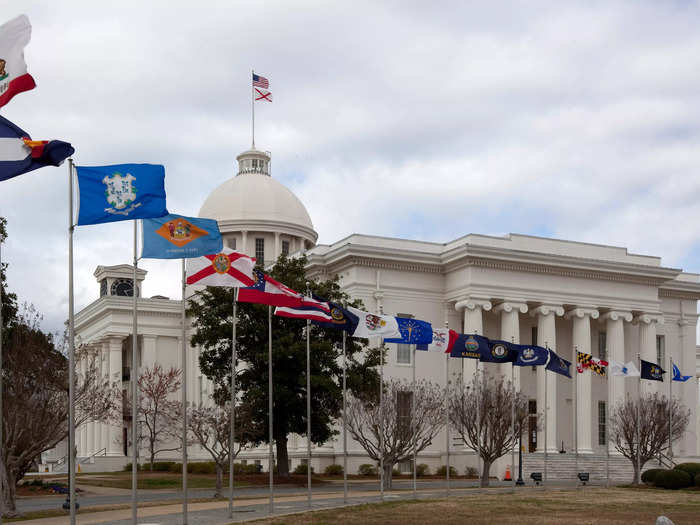
Alabama's capitol building is also where the Confederacy began, and there's a brass star on one of the porticos marking the spot where Jefferson Davis was sworn in as its president, according to the Alabama Historical Commission.
The building that stands today was constructed in 1851, after a fire burned down the original building in 1849, according to the Alabama Historical Commission.
One of the more famous parts of the capitol grounds is the Avenue of Flags. It has the flag of every state plus a native rock from each state at each flag's base. It was dedicated in 1968, according to Exploring Montgomery.
Juneau, Alaska
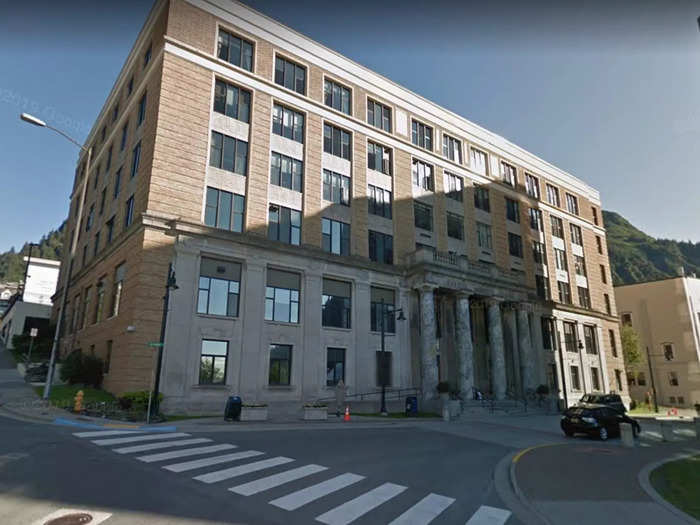
The Alaska State Capitol, completed in 1931, doesn't look much different from any other office building in Juneau, save the marble columns. According to Alaska's official website, it is one of few state capitol buildings to not feature a dome.
As The New York Times reported in 1981, neither the building nor the location were popular with locals — both were chosen because the residents of Alaska had to fund construction themselves — but efforts to move the capitol have failed, even though a vote passed to move the location in the '70s.
As recently as 2022, Alaskan senators sponsored a bill to move the capital, this time to Willow, reported Alaska Public Media, but for now, Juneau remains the Last Frontier's capital city.
Phoenix, Arizona
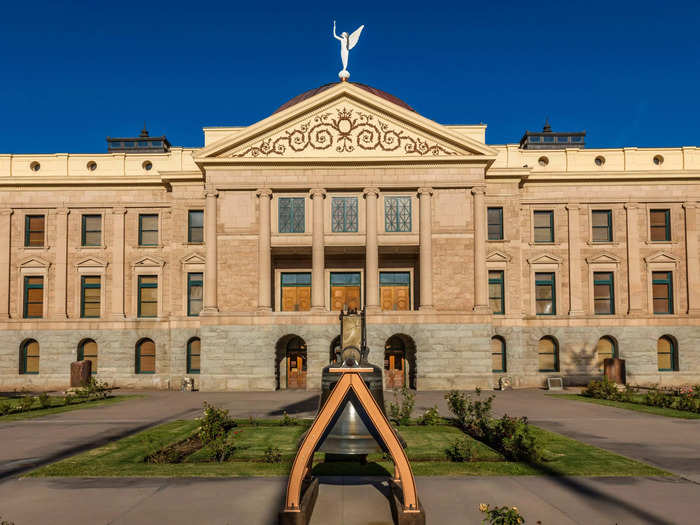
According to Encyclopedia Britannica, Arizona's capitol building was dedicated in 1901. It stopped being the home of the legislative branches of government in 1960 — and by 1978, all government officials had been moved to other buildings nearby in an area called the Capitol Complex.
The original building was then officially converted into a museum that anyone can visit.
Little Rock, Arkansas
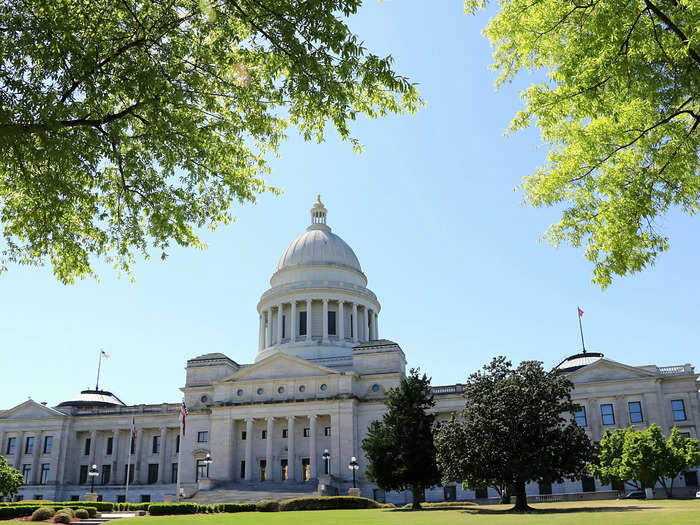
It took 16 years to complete construction, which lasted from 1899 to 1915, and was designed by architects George R. Mann and Cass Gilbert, according to the Encyclopedia of Arkansas.
This building replaced the State House, which is now the Old State House Museum, according to Arkansas Heritage.
Sacramento, California
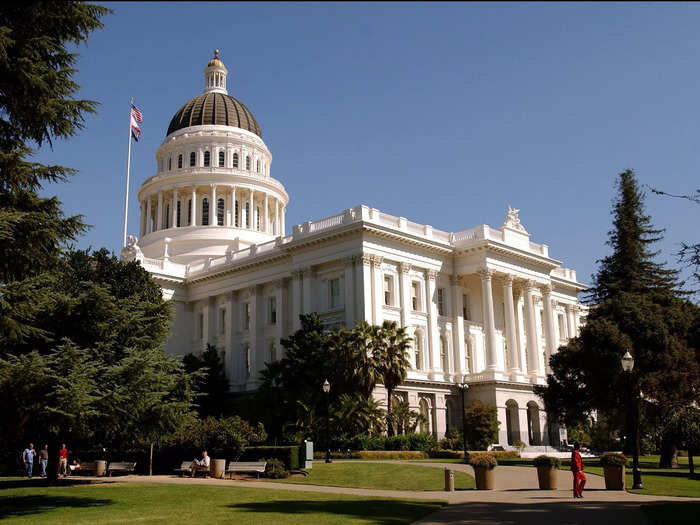
The building was constructed between 1860 and 1874, and designed by Reuben S. Clark, and it has been listed as a California Historical Landmark since 1974, according to the Historic State Capitol Commission.
Its design was based on the US Capitol in Washington, DC, among other well-known American buildings, according to the State of California Capitol Museum.
The California State Capitol is located inside the 40-acre Capitol Park, which contains trees from around the world, a World Peace Rose Garden, and the Civil War Memorial Grove.
Denver, Colorado

The Colorado Capitol Building, which was completed in 1901, was also designed to look like the US Capitol building, but with a Colorado twist: The dome is covered in real gold leaf donated by gold miners to reference the Colorado Gold Rush from 1858 to 1861, according to the Colorado General Assembly.
Hartford, Connecticut
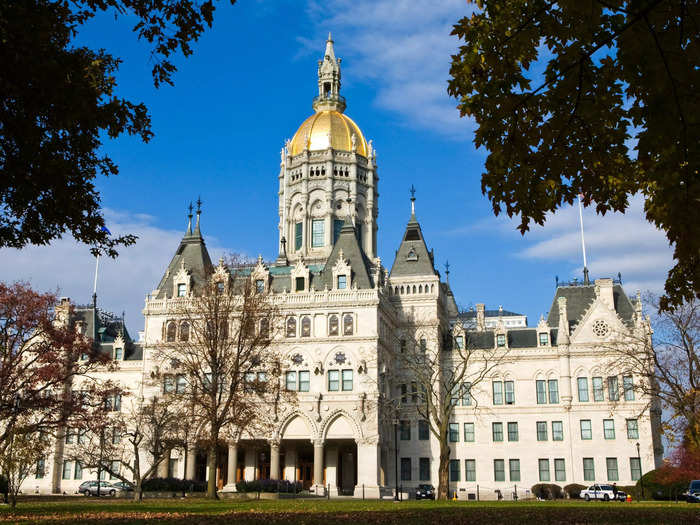
The current Connecticut State Capitol is actually the third capitol building the state has had since the American Revolution. This one, designed by Richard M. Upjohn, opened in 1879, according to Connecticut's official state website.
The golden dome is surrounded by six pairs of statues representing agriculture, commerce, education and law, force and war, science and justice, and music, according to the State Capitol Preservation & Restoration Commission.
Dover, Delaware
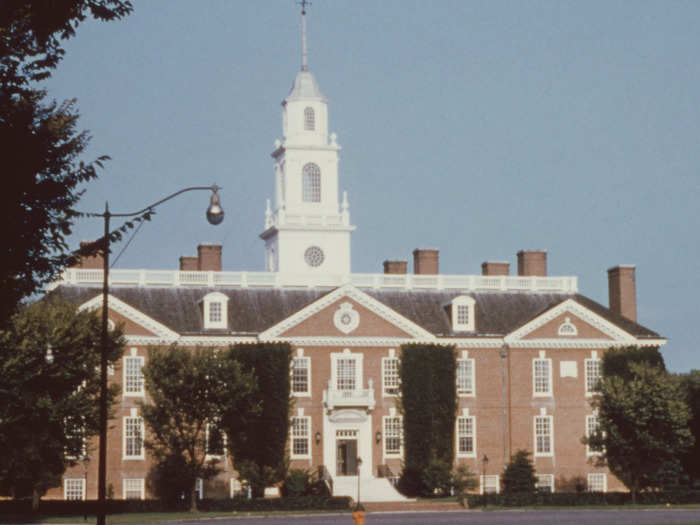
The Delaware Legislative Hall was dedicated in 1933 and replaced the Old State House, which is opposite the Hall on the capitol mall. It was designed in the Colonial Revival style by E. William Martin, according to Delaware's official state website.
Washington, DC

The United States Capitol is located on Capitol Hill in DC. It was in construction for decades, partially destroyed in 1814, and then finally finished in 1829, according to Architect of the Capitol. The famous, gigantic dome was later added during an expansive addition in 1855, designed by Thomas U. Walter.
Atop the dome sits the "Statue of Freedom," a 19-foot statue of a woman wearing a battle helmet, holding a sheathed sword in one hand, and a laurel wreath and shield in the other. She's been there since 1863, according to Architect of the Capitol.
Tallahassee, Florida
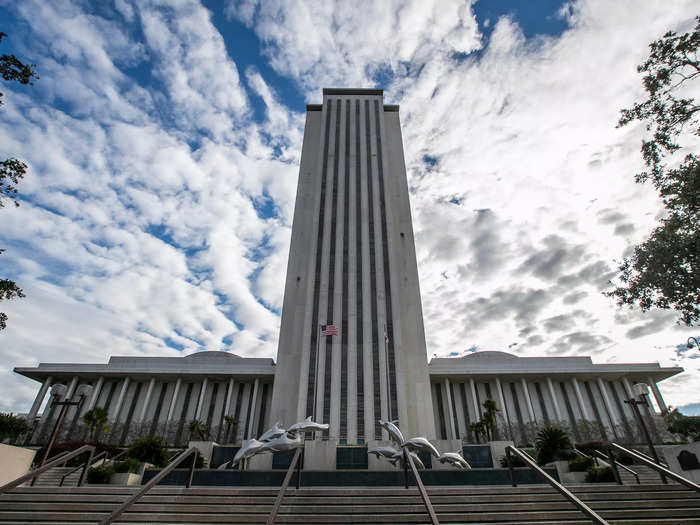
The current capitol building, also called the New Capitol, is located directly in front of the original. Together, they form the Capitol Complex. The New Capitol was built in 1977 by architect Edward Durell Stone and the firm of Reynolds, Smith, and Hills, according to the Florida Capitol website.
The website reports the building was designed in an "international style to reflect a modern Florida," and includes a 22-story central tower.
The Old Capitol still stands, and it was restored to its original 1902 glory in the '80s. Currently, the building is the Florida Historic Capitol Museum.
Atlanta, Georgia
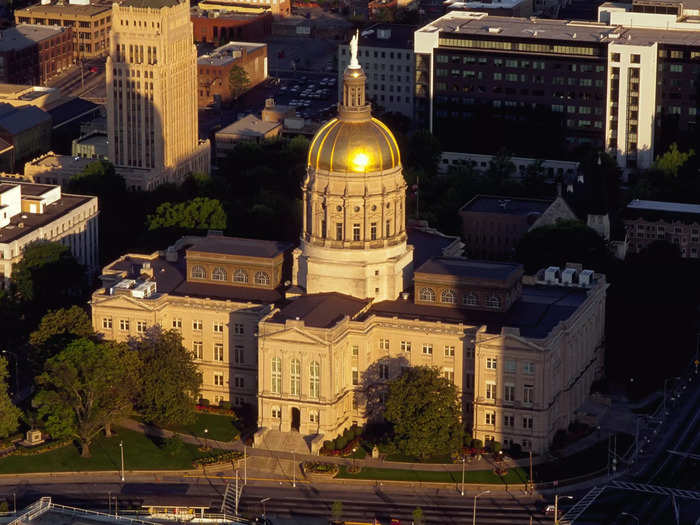
Georgia's current capitol building was finished in 1889 and designed by Willoughby J. Edbrooke and Franklin P. Burnham, according to the city of Atlanta's website. It sits on the site of the former Atlanta City Hall/Fulton County Courthouse, which was there from 1854 to 1994.
According to the city, it's one of 43 National Historic Landmarks in the state.
Honolulu, Hawaii
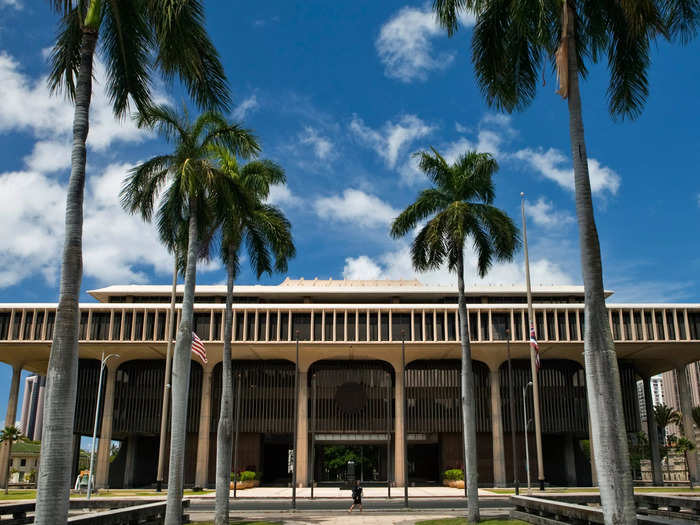
At the dedication of the Hawaiian capitol building in 1969, then-Governor John A. Burns explained the design of the building, the Honolulu Star Advertiser reported.
"In this great State Capitol there are no doors at the grand entrances which open toward the mountains and toward the sea," he said. "There is no roof or dome to separate its vast inner court from the heavens and from the same eternal stars which guided the first voyagers to the primeval beauty of these shores."
The building is also surrounded by a reflecting pool meant to symbolize the Pacific Ocean, which surrounds the chain of 137 recognized islands that make up Hawaii, according to the State of Hawaii.
Boise, Idaho
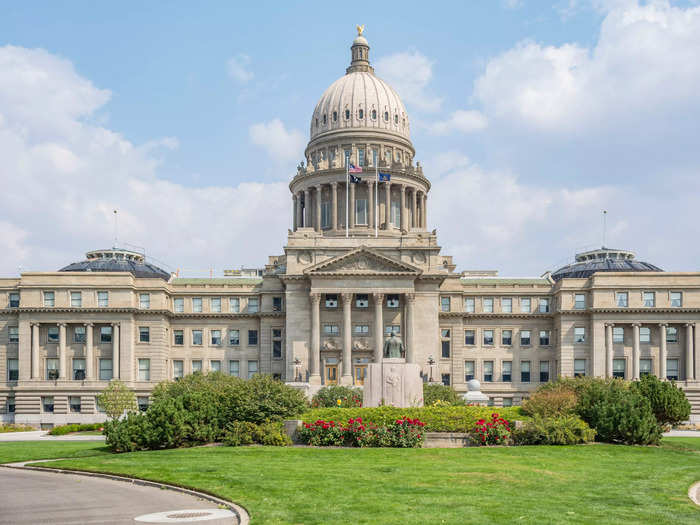
Idaho's capitol building was designed by architects J.E. Tourtellotte and Charles Hummel, and was constructed between 1905 and 1920. According to Idaho's Capitol Commission, it's the only capitol building in the US that is heated by geothermal water. It comes from a spring 3,000 feet underground.
Springfield, Illinois
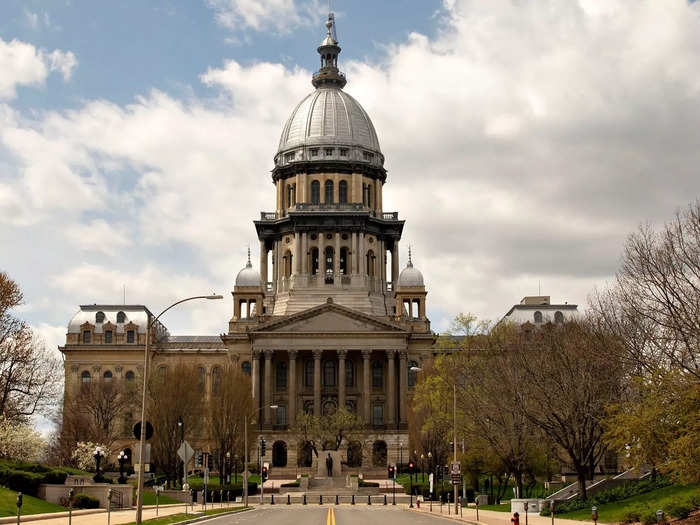
According to a pamphlet by the Illinois Secretary of State's office, the current capitol building (which is the state's sixth) was completed in 1888, 20 years after crews broke ground. At the time of its construction, the limestone dome was illuminated by 144 gas jets. But the carbon that was emitted by those jets eventually turned the dome black.
It took 100 years, but it was finally cleaned in 1986.
Indianapolis, Indiana
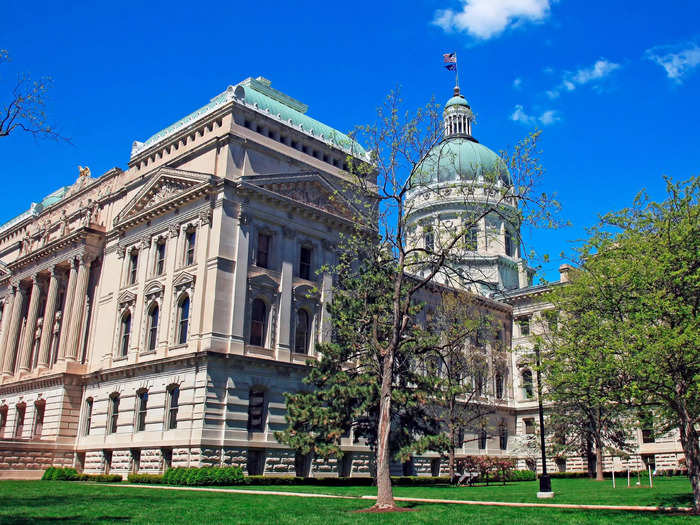
According to the Indiana Department of Administration, Indiana's capitol building was completed in 1888, and is home to all executive offices, the Indiana State Senate, the Indiana House of Representatives, and the Indiana State Supreme Court, among others. It was constructed with Indiana limestone.
Des Moines, Iowa
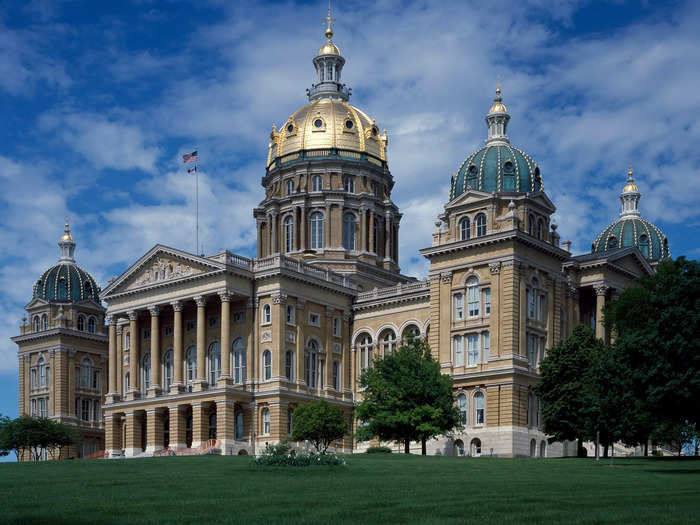
The large golden dome is 23 carats, and the entire building is 275 feet tall, according to a visitor's guide. It's been re-gilded four times since its construction in 1886.
Overall, Iowa's capitol building has a total of five domes, making it the only capitol building in the US with five.
Topeka, Kansas
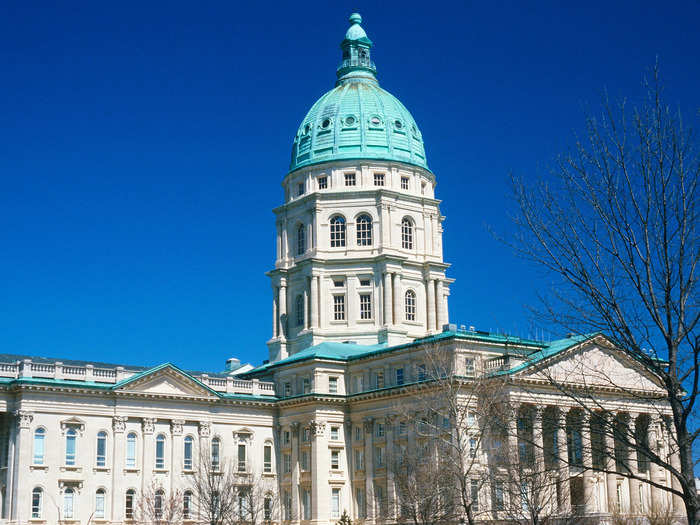
Kansas' capitol dome is topped with a statue called "Ad astra" (Latin for "to the stars"), which is part of the state's motto, "ad astra per aspera" ("to the stars through difficulties"), according to the Kansas Historical Society.
The statue itself is a bronze depiction of a warrior from the Kansa tribe (also known as the Kaw Nation or Kanza), who call Kansas home and gave the state its name.
The entire building took 37 years to construct, also according to the Kansas Historical Society, from 1866 to 1903.
Frankfort, Kentucky

Kentucky's capitol building was designed by Frank Mills Andrews, according to Kentucky's official state website. There are also statues lining the front portico that represent Kentucky, the central figure, with Progress, History, Plenty, Law, Art, and Labor as her "attendants," according to the state website.
The current building is the fourth capitol building in the state, and it was completed in 1910.
Baton Rouge, Louisiana
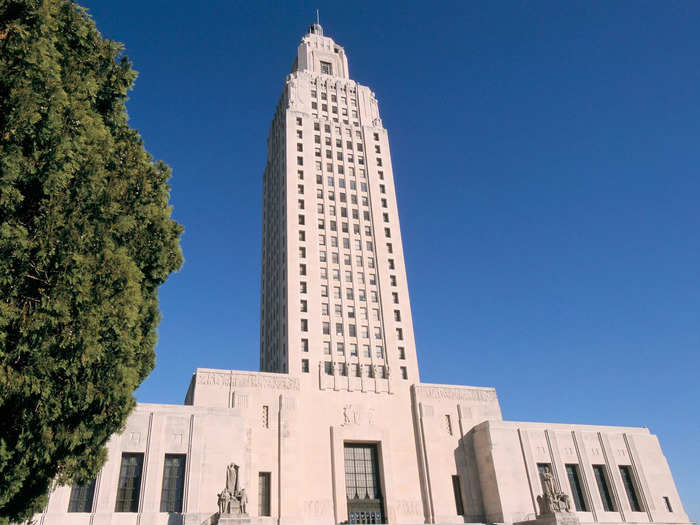
The Louisiana Capitol Building is just one of nine capitol buildings in the US that doesn't feature a dome — and at 450 feet tall (or 34 floors), it's also the tallest capitol building in the country, according to Louisiana's House of Representatives.
It was dedicated in 1932, without the person who had spearheaded the effort to build it, Senator Huey P. Long, a controversial figure in Louisiana's history, as reported by Encyclopedia Britannica.
Augusta, Maine
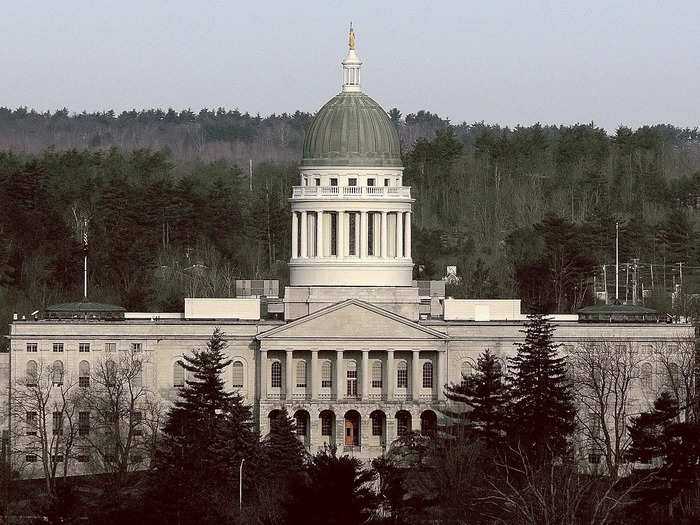
The capital of Maine was originally Portland when the state broke away from Massachusetts in 1820. But when Mainers asked for a more centrally located capital city, Augusta was chosen in 1827, according to the Maine State Legislature. The building was completed by 1832.
The State House's dome is topped with a female figure of Wisdom, which was designed by sculptor W. Clark Noble of Gardiner, a town 6 miles from Augusta.
Annapolis, Maryland
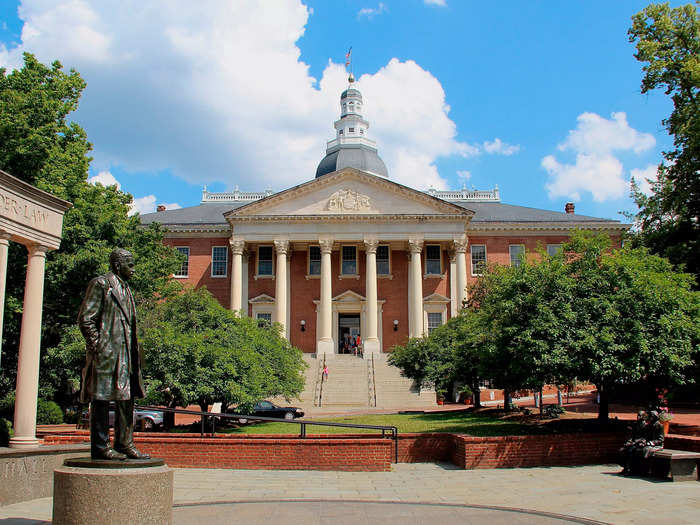
Maryland's State House is the oldest capitol building in continuous legislative use in the US, built in 1779, according to its official website. It's also the only state capitol to have once served as the US capitol when the Continental Congress met there from 1783 to 1784, according to the website.
Boston, Massachusetts
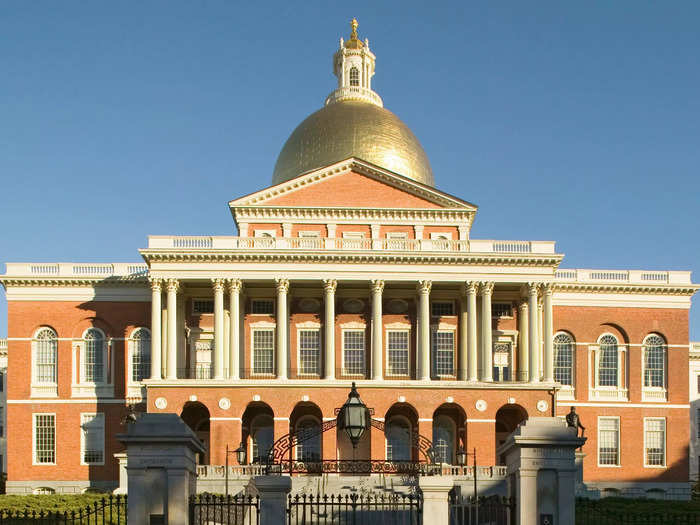
The Massachusetts State House, built in 1789, originally had a wooden dome, but Paul Revere's own company was responsible for covering it in copper in 1802, CBS News reported.
And the land it was built on? It used to be owned by none other than John Hancock, who was Massachusetts' first elected governor.
Lansing, Michigan
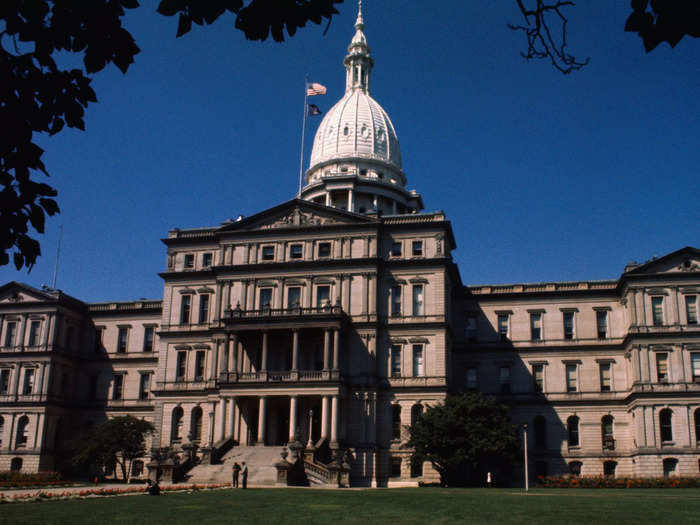
The floors of Michigan's capitol building, which was dedicated in 1879, are made of limestone and have visible fossils in them, as you can see on the capitol building's official website.
St. Paul, Minnesota
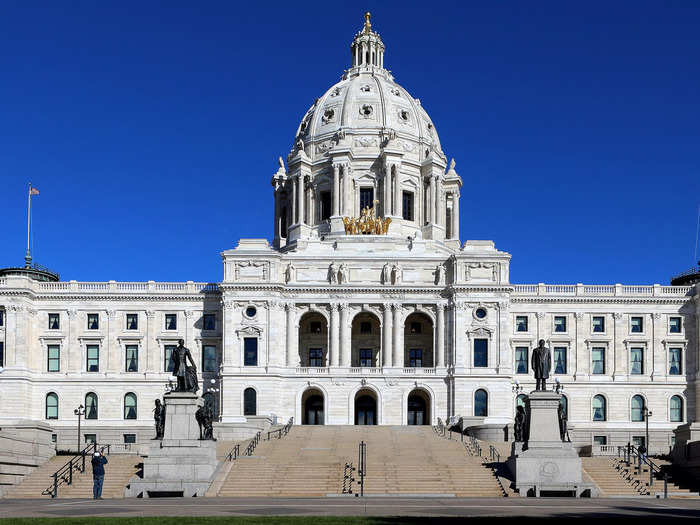
According to Explore Minnesota, the state's capitol building is the second-largest self-supporting marble dome in the world, only behind St. Peter's Basilica in Rome.
Architect Cass Gilbert insisted on using Georgia marble for the dome, according to the Minnesota Historical Society. Some were critical of using out-of-state materials, so as a compromise, the contractor leased the quarry in Georgia and imported the rough marble so Minnesotans could do the work in-state.
It took nine years, but was completed in 1905.
Jackson, Mississippi
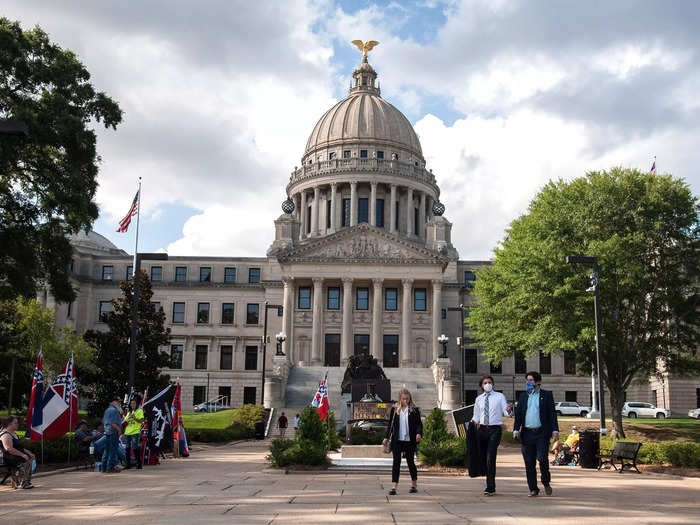
Designed by architect Theodore Link and constructed between 1901 and 1903, Mississippi's state capitol was built on the site of an old state penitentiary, according to the state capitol's official website. The building spans 171,000 square feet and features 4,750 original electric light fixtures, as well as an 8-foot statue of an eagle on the top of its dome.
Jefferson City, Missouri
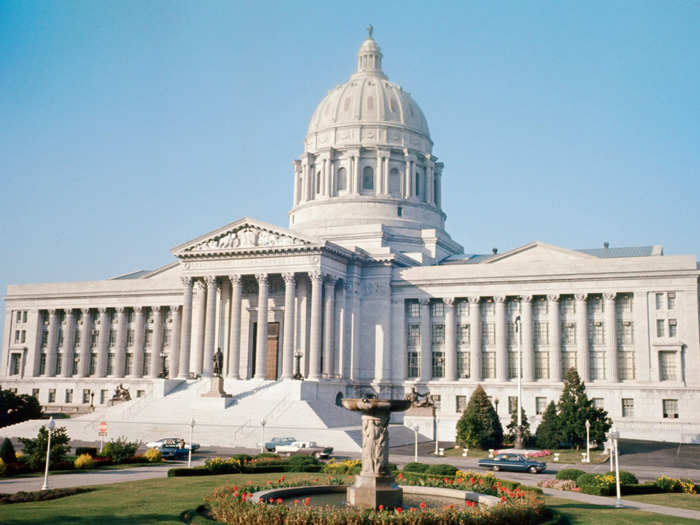
Missouri's state capitol was completed in 1917, according to its official website. Ceres, the goddess of grain, sits at the top of its dome.
In addition to Missouri's state legislature, the 500,000-square-foot building houses the Missouri State Museum with exhibits about the state's history and natural resources.
Helena, Montana
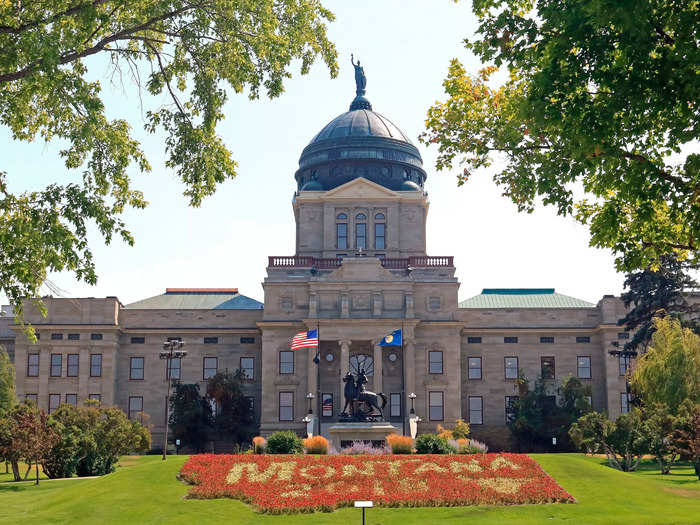
The main building of Montana's state capitol was completed in 1902, and its two wings were added in 1911 and 1912, according to the Montana Historical Society. Inside, the building features works of art such as the mural "Lewis and Clark Meeting Indians at Ross' Hole," painted by Charles M. Russell in 1912.
Lincoln, Nebraska
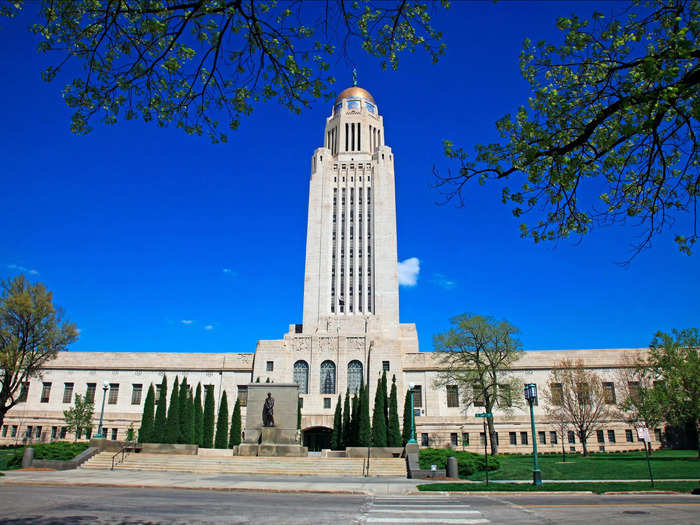
Nebraska's state capitol building was designed by architect Bertram Grosvenor Goodhue and completed in 1932, according to its official website. The 400-foot tower is topped with a 19-foot bronze statue called "The Sower."
It is the only state legislature to be unicameral, meaning it only has one chamber.
Carson City, Nevada
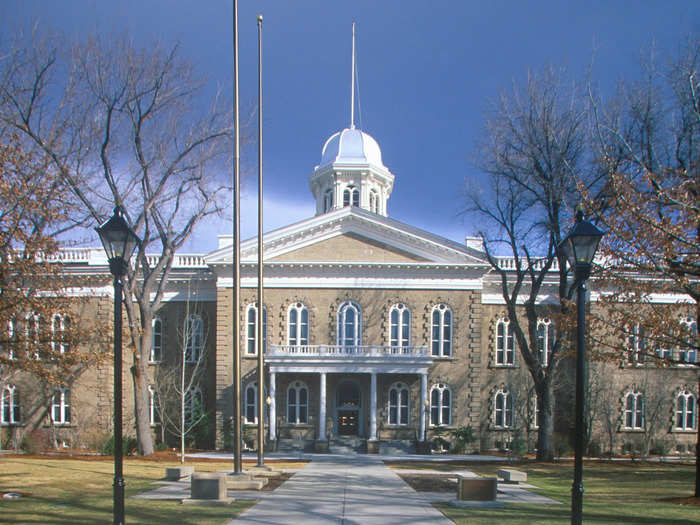
Nevada's state capitol was built from 1870 to 1871 out of sandstone sourced from a quarry belonging to Abe Curry, the founder of Carson City, according to Travel Nevada. It features a silver-colored dome, a nod to Nevada's nickname as "the silver state."
Concord, New Hampshire

The New Hampshire State House was constructed between 1816 and 1819 with locally sourced granite from Rattlesnake Hill in Concord, according to the New Hampshire Division of Historical Resources.
In 1818, a wooden sculpture of an eagle painted with gold was installed on top of the capitol dome. It was replaced with a copper replica in 1957, but the original sculpture can be viewed on display inside the capitol, according to EverGreene, the architecture firm that restored the State House's gold-plated dome.
Trenton, New Jersey
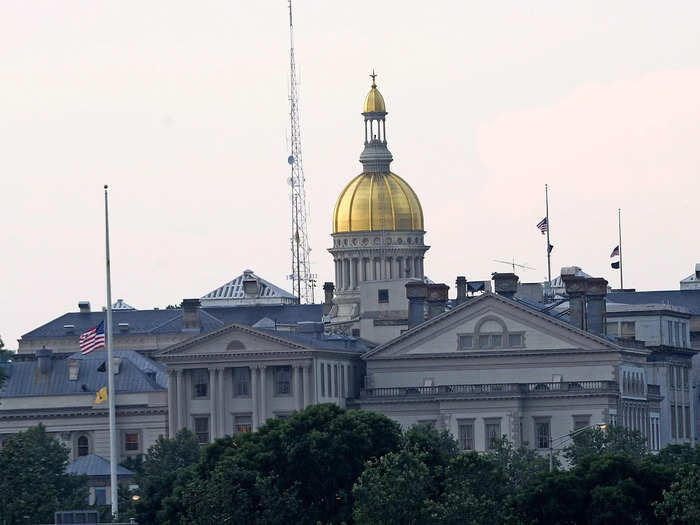
After Maryland, New Jersey State House is the second-oldest capitol building still in use, completed in 1792, according to the state of New Jersey's official website. Much of the original building, designed by architect Jonathan Doane, was destroyed in a fire in 1885.
Architect Lewis Broome restored the capitol and added a cast-iron dome plated with copper and gold and featuring the Latin phrase "Fiat Justitia Ruat Coelum," meaning "There must be justice even though the heavens fall."
Santa Fe, New Mexico
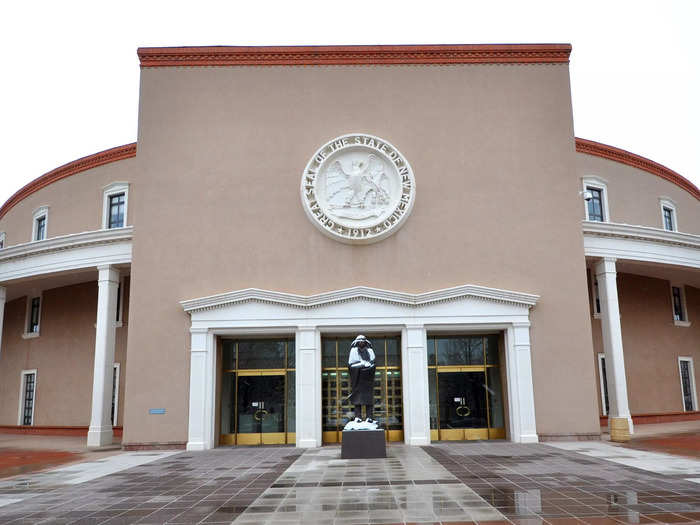
New Mexico's capitol building, known as the Roundhouse, is the only round capitol building in the US, according to Santa Fe's official tourist website. Architect Willard C. Kruger modeled the design after the Zia sun symbol, which he also incorporated into the capitol rotunda skylight. The symbol is also part of New Mexico's state flag.
Albany, New York
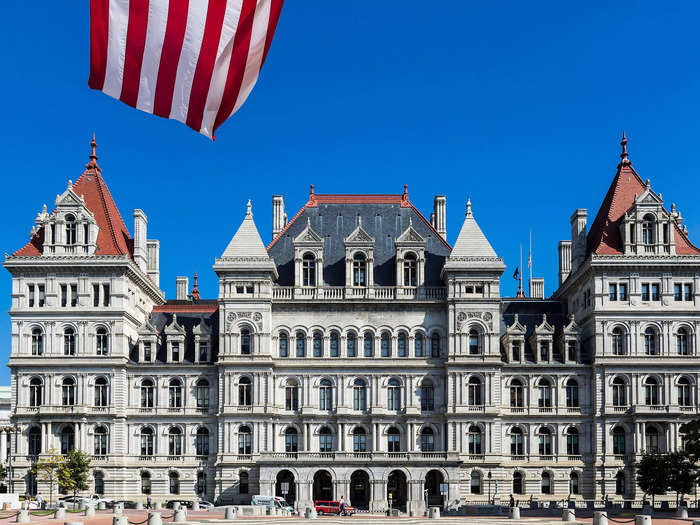
Spanning 3 acres and 5 stories, New York's state capitol took 32 years to build, from 1867 to 1899, according to the National Park Service. Inside the granite building, visitors can find 25 murals by William deLeftwich Dodge in the Governor's Reception Room.
Raleigh, North Carolina

Completed in 1840, North Carolina's 3-story capitol building includes a copper dome, according to the National Park Service. It is currently closed to the public for construction.
Bismarck, North Dakota
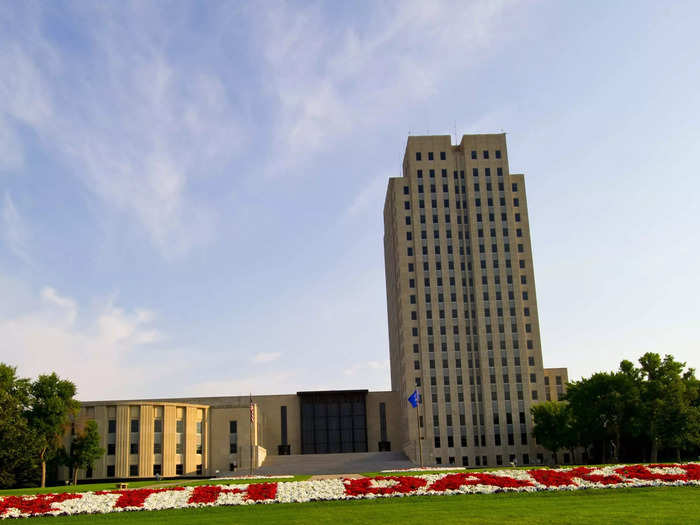
North Dakota's state capitol is the tallest building in the state at 241 feet and 8 inches tall, according to the official government website and North Dakota's secretary of state's website. The Art-Deco structure is nicknamed the "Skyscraper on the Prairie," according to the Society of Architecture Historians.
Columbus, Ohio
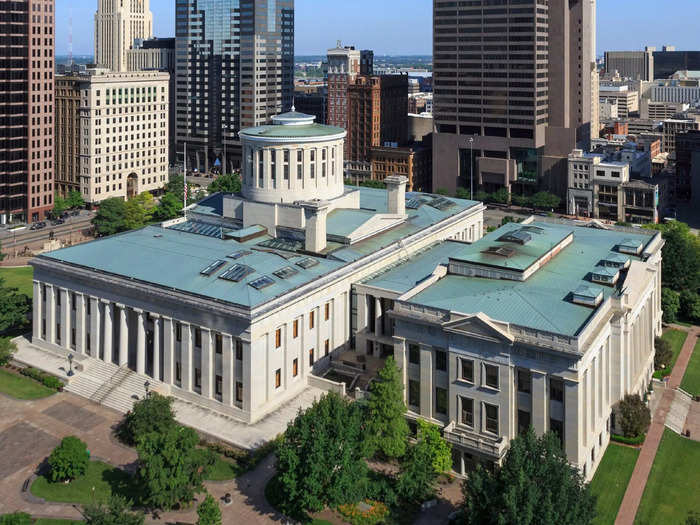
Construction of the Ohio Statehouse took over 20 years, from 1839 to 1861, according to its official website. Much of the work was done by prisoners at Ohio Penitentiary, some of whom left graffiti on the walls that was uncovered during restoration work, the website says. Built in the Greek-Revival architecture style out of Columbus limestone, the Statehouse is a designated National Historic Landmark.
Oklahoma City, Oklahoma
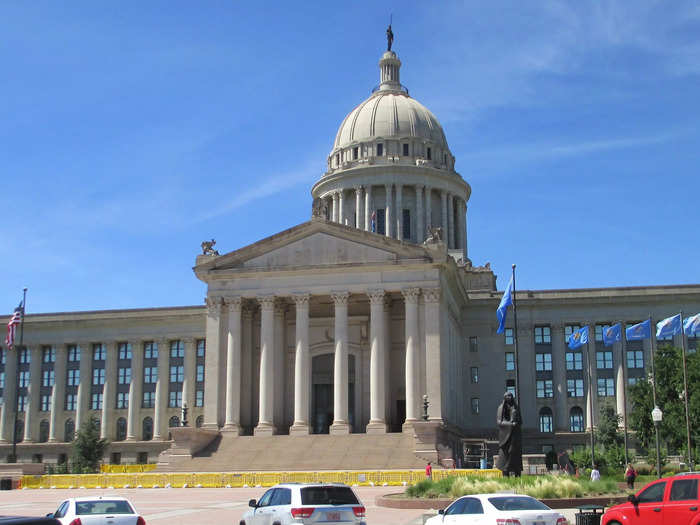
Built in 1917, the dome on Oklahoma's capitol was added more recently, in 2002, according to the Oklahoma Historical Society — it was left out of the original construction due to costs. The grounds of Oklahoma's capitol also had active oil rigs until 1986. The building was added to the National Register of Historic Places in 1976.
Salem, Oregon

Oregon's Art-Deco capitol building is made of white Vermont marble with a gold statue of an "Oregon Pioneer" atop the dome, according to the capitol's official website. In-person guided tours are paused until 2025 due to construction.
Harrisburg, Pennsylvania
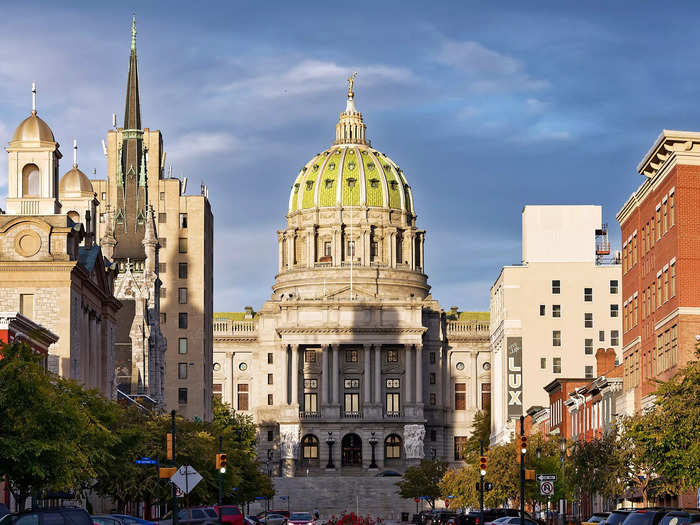
Pennsylvania's capitol building, designed by architect Joseph Huston, cost $13 million to build when it was completed in 1906, which would be over $403 million today, according to the Bureau of Labor Statistics' inflation calculator.
The building's 272-foot dome is decorated with green glazed terra cotta tile, according to the capitol's official website.
Providence, Rhode Island
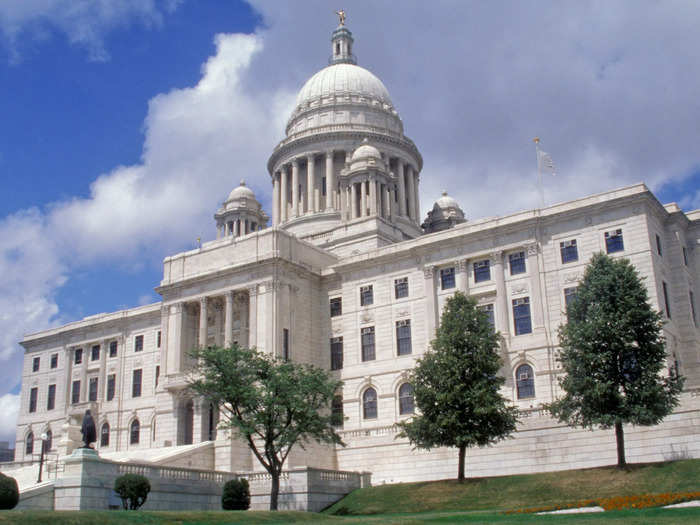
The Rhode Island State House, built between 1895 and 1904, features the fourth-largest freestanding marble dome in the world, according to the Rhode Island Restoration Committee's official website. It has been listed on the National Register of Historic Places since 1970.
Columbia, South Carolina

The construction of the South Carolina State House began in 1854, but halted due to the Civil War. The building still features cannonball marks from when the Union army captured Columbia in 1865, according to Discover South Carolina. The State House was finally completed in 1903, and it was designated as a National Historic Landmark in 1976, according to the South Carolina Department of Archives and History.
A portrait of state senator Clementa Pinckney, who was killed in the 2015 shooting at Charleston's Mother Emanuel AME Church, hangs in the Senate Gallery.
Pierre, South Dakota
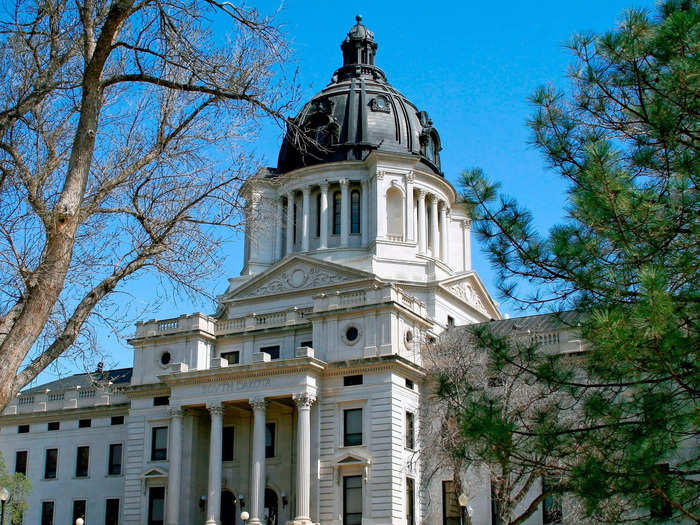
South Dakota's state capitol building was constructed between 1905 and 1910, not long after South Dakota became a US state in 1889, according to the South Dakota Bureau of Administration. An annex was added in 1932. The Neoclassical building features scagliola plaster columns, war memorials, and stained-glass windows, according to Travel South Dakota.
Nashville, Tennessee
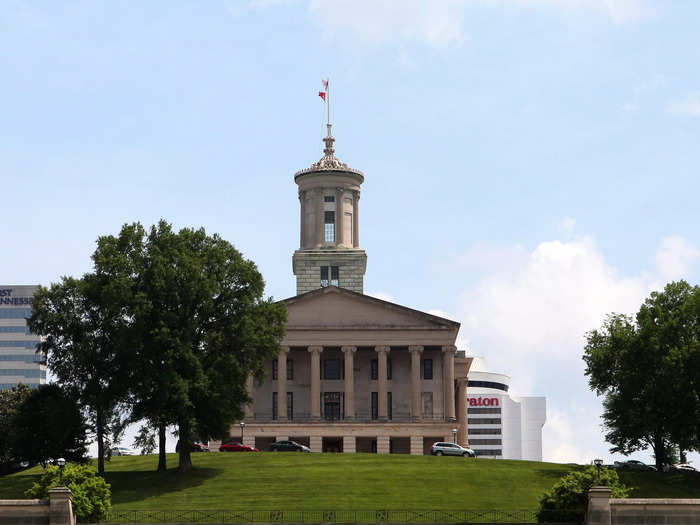
The Tennessee State Capitol opened in 1859. The architect, William Strickland, died during its construction in 1854 and was buried on the capitol grounds along with President James K. Polk and first lady Sarah Childress Polk, according to the Tennessee State Museum.
Austin, Texas
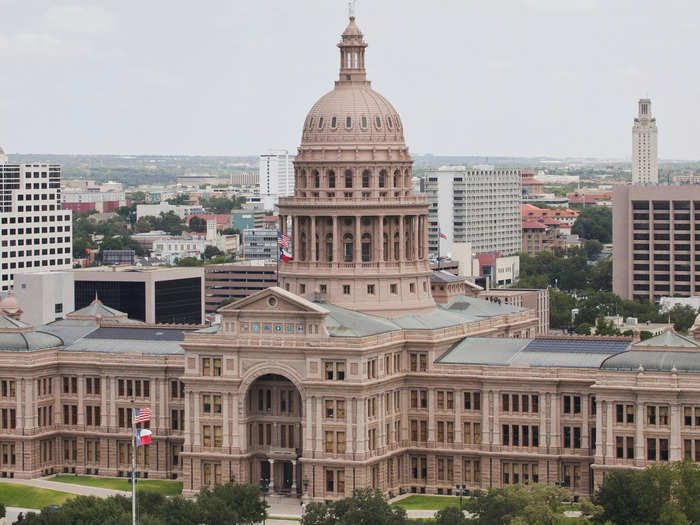
Completed in 1888, the Texas State Capitol dome is topped with a statue of Libertas, the goddess of liberty, according to the official website for the Texas House of Representatives. It stands 14 feet taller than the US Capitol building.
Salt Lake City, Utah
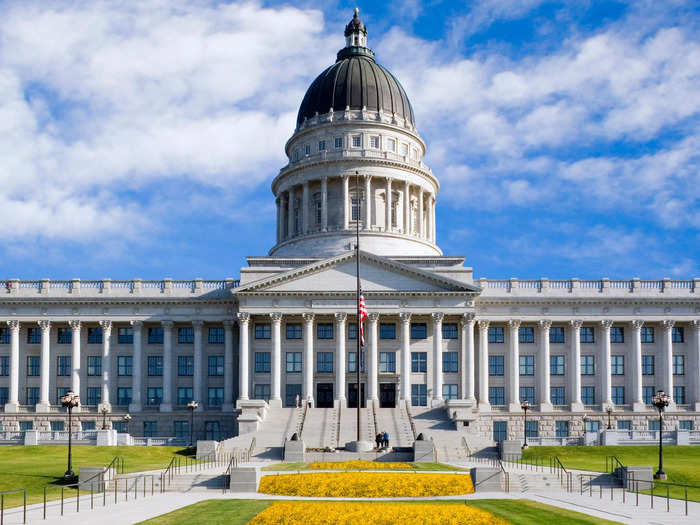
Utah's State Capitol was designed by architect Richard K.A. Kletting and was completed in 1916, according to its official website. The rotunda features bronze and marble statues of Native American leaders, LDS pioneers, and US presidents such as Abraham Lincoln, according to its website.
Montpelier, Vermont
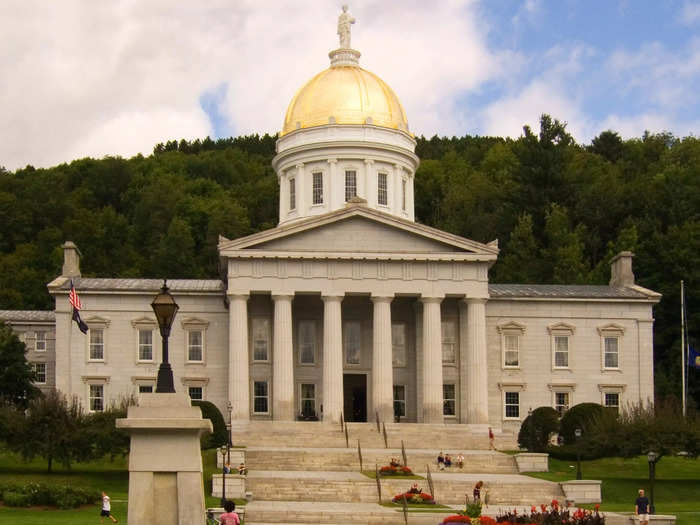
The Vermont State House, designed in the Greek Revival architecture style, dates back to 1857, according to the National Park Service. A statue of Ceres, the goddess of agriculture, adorns the top of the dome.
Richmond, Virginia
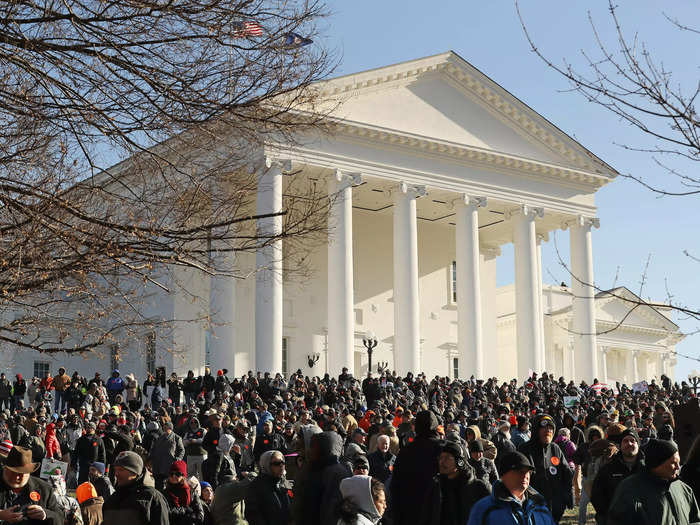
Thomas Jefferson designed Virginia's state capitol building to look like the ancient Roman temple of Maison Carée, according to the Virginia General Assembly's official website. The building also features a bronze statue of Jefferson, who is depicted holding the capitol's architectural blueprints.
Olympia, Washington
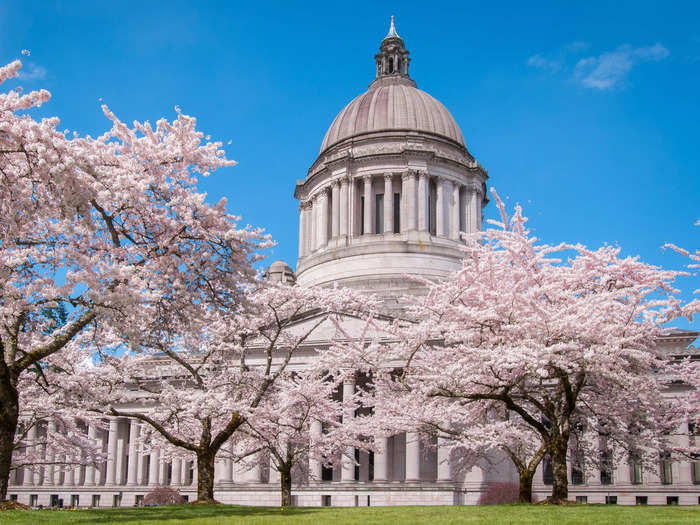
The Washington State Legislative Building features the tallest freestanding masonry dome in North America at 287 feet, according to the Washington State Department of Enterprise Services. Designed by Walter Wilder and Harry White, it was completed in 1928.
Charleston, West Virginia
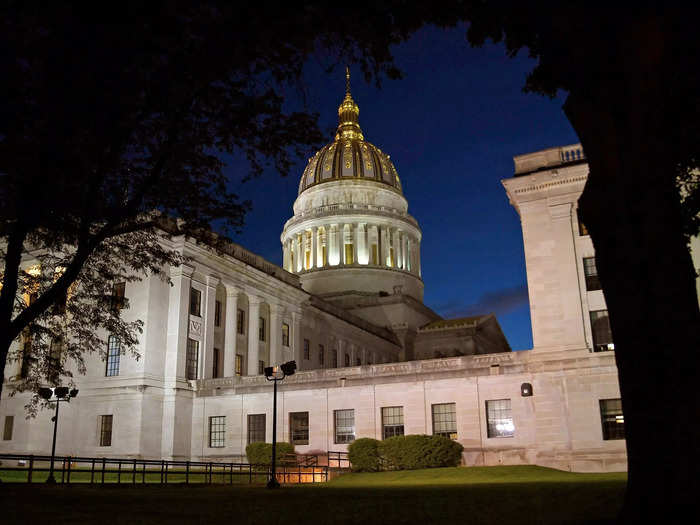
West Virginia's capitol, designed by Cass Gilbert, took eight years and almost $10 million to construct before its completion in 1932, according to its official website. The dome stands at 293 feet tall — 5 feet higher than the US Capitol in Washington, DC.
Madison, Wisconsin
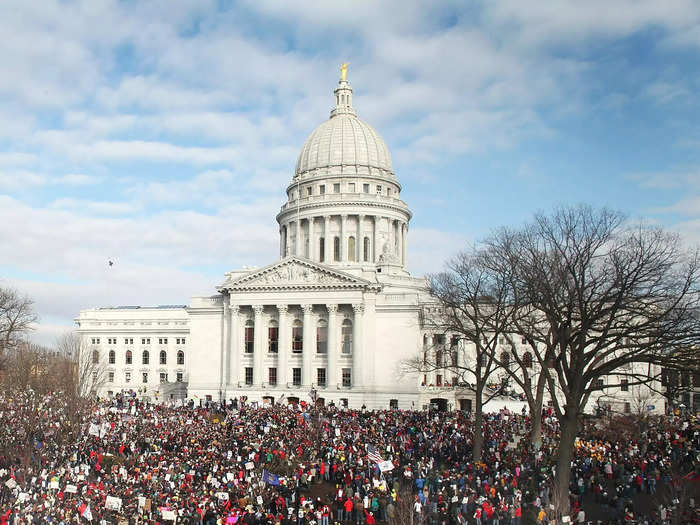
Wisconsin's state capitol building features the only granite dome in the US, according to Travel Wisconsin. On top of the dome, a gilded bronze statue by Daniel Chester French is aptly named "Wisconsin."
Cheyenne, Wyoming
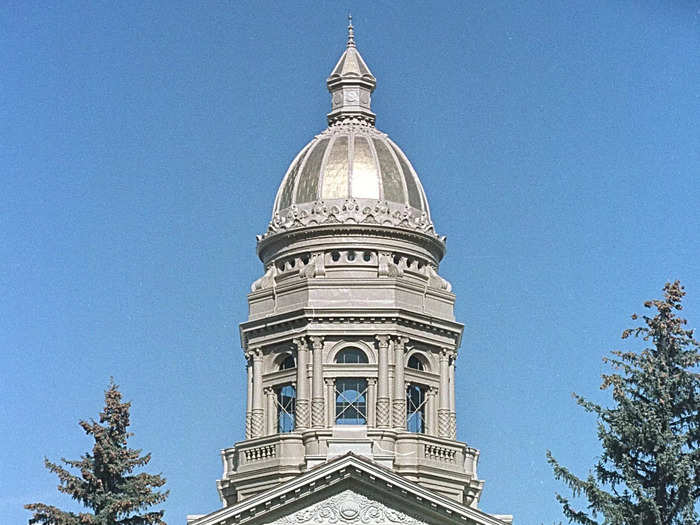
Wyoming's state capitol, constructed between 1886 and 1890, was built in the Renaissance Revival architecture style, according to the Wyoming Department of Administration and Information. It is one of 20 current state capitols designated as a National Historic Landmark, according to the National Park Service.
Popular Right Now
Popular Keywords
Advertisement